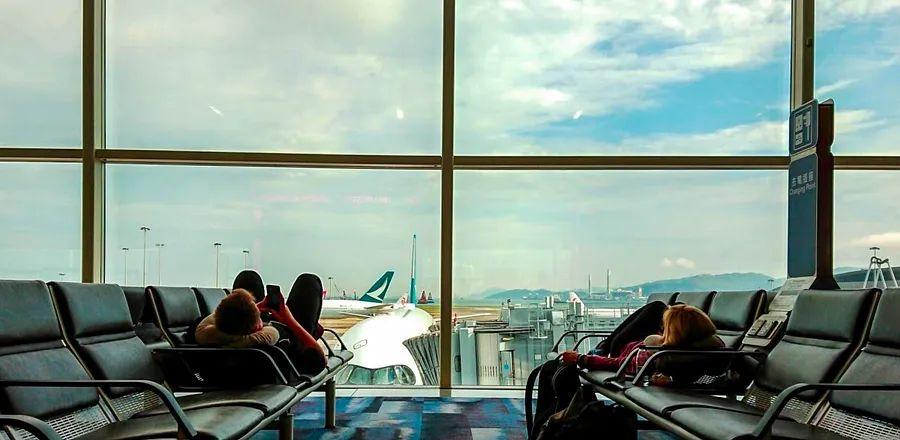How to Prevent Flight Delays and Cancellations

Numerous factors can lead to flight cancellations or delays, from ongoing operational and staffing challenges at airports and airlines to an increasing frequency of unpredictable severe weather events impacting air travel.
In 2022, 2.7 percent of all domestic flights in the U.S. were canceled—the highest cancellation rate in the last decade, excluding 2020—and nearly a quarter (23 percent) of domestic flights experienced delays, according to Bureau of Transportation Statistics. With air travel numbers potentially exceeding pre-pandemic levels in 2023, what strategies can travelers adopt to prepare for and avoid unexpected delays and cancellations that can happen at any time?
Here are some straightforward steps that travelers can take to alleviate the stress of flying and enhance their chances of a smooth journey. Equip yourself with these insider tips from airline professionals.
Essential Information Before You Depart

Photo by Taiga/Shutterstock
Enroll in TSA PreCheck, Clear, and/or Global Entry
These security expediting services are more essential than ever amid the current congestion at U.S. airports. The cost of TSA PreCheck has been recently lowered to just $78 for a five-year membership and $70 for renewal. Clear costs $189 annually. For international travelers, the $100 Global Entry, which includes TSA PreCheck, provides expedited customs processing when entering the U.S.—and there’s a hidden method to accelerate the application process.
Check if your airport offers a fast-pass security lane that you can reserve in advance—for free.
No TSA PreCheck or Clear? Certain U.S. airports are allowing travelers to make a free advance “fast pass” reservation to skip to the front of the security line. We’ve compiled a complete list of airports that offer this option.
Book directly through the airline and be sure to download their app
Airlines have significantly upgraded their technology to empower passengers with various features, such as tracking flights and luggage, and—most importantly in the current climate—canceling or changing your flight. This will be beneficial if you need to rebook and view all available flights through your carrier. Also, remember to continuously check your flight status; don’t rely solely on alerts.
Use a credit card that includes trip insurance or purchase travel insurance
Before purchasing travel insurance, “Check your credit card first, as many credit cards provide trip-interruption or trip-cancellation coverage,” advises Willis Orlando, senior product operations specialist at flight-deal tracking service Scott’s Cheap Flights. If unexpected expenses arise (like meals at the airport, overnight stays, or rebooked flights) due to delays or cancellations not covered by the airline, a credit card with coverage can help secure at least a partial refund, if not the full amount. If you lack a travel credit card with sufficient coverage, consider adding travel insurance to your trip.
Think about utilizing a travel advisor
Exceptional travel advisors excel in creating unmatched trip and itinerary plans. However, their value shines brightest in challenging times. They can negotiate with airlines on your behalf to secure rebookings, flight credits, and refunds. Engaging a travel advisor can be a great asset when flight disruptions occur.
Opt for the earliest flight available
“The first flight of the day is crucial now more than ever,” says William McGee, an aviation expert and author of Attention All Passengers. “Aim for that 6 a.m. departure,” since delays are more likely to accumulate later in the day.
Whenever possible, choose a nonstop flight over a connecting one
Even if it means higher airfare, choosing a nonstop flight is advisable. As McGee states, “Why increase your chances of encountering issues if you can prevent them?”
Opt for longer layovers
If nonstop flights aren’t an option, allow extra time between connections, especially for international travel where you’ll need to go through customs and security again. One hour is insufficient; aim for at least two hours for domestic layovers and three hours for international flights.
Arrive a day (or two) earlier
Travel booking platform Hopper recommends incorporating days, not just hours, of buffer time for any important events, like weddings, celebrations, critical business meetings, cruise departures, or holiday gatherings. Why not savor some additional time at your destination instead of risking missing out altogether?
Reserve a backup flight
Kathleen Bangs, a former airline pilot and spokesperson for the flight tracking app FlightAware, often takes the initiative to book a backup flight with a different airline, provided it has no change fees and offers a flexible cancellation policy—like Southwest Airlines, which allows cancellations up to 10 minutes before departure. If you don’t need the backup flight, you can use the credit for future travels.
Install the FlightAware app
Orlando highly recommends this flight tracking app, which can alert travelers to upcoming changes often before the airline does. He points out that if your flight keeps getting delayed on the departure board, you can use FlightAware to track your aircraft's journey. If it appears to be stuck at its last departure location, it might be time to explore alternative flight options.
Keep an eye on the weather
If you’ve ever wanted to be a meteorologist, now is your opportunity. Utilize weather radar and forecasts from platforms like National Weather Service, The Weather Channel, and AccuWeather. “You should have a general understanding of the major weather systems moving across the country,” advises Bangs. She emphasizes that even if a weather event isn’t affecting your travel area, its ripple effects could still impact your flight.
Navigating to and through the airport

Photo by Shutterstock
Visit the airport’s website for updates on potential construction-related delays
If construction projects are taking place at your departure airport, some road lanes may be closed and parking detours could be in effect. It’s wise to stay informed about any ongoing work at the airport to plan your journey effectively. (The same goes for any potential delays on the highways leading to the airport.)
Get to the airport earlier than usual
Wait times and lines at airports across the country (and internationally) are longer than they have been in years. It’s better to arrive early and have extra time after security than to risk missing your flight while waiting in lengthy check-in or security lines. (Plus, it will save you from the panic of rushing to the gate after a frustratingly long security queue—starting your travel day in a frenzy isn’t ideal.) Aim for at least two hours prior for domestic flights and three hours for international ones, suggests Orlando.
Install the MyTSA app
This Transportation Security Administration-powered app offers real-time updates on security line wait times at airports nationwide.
What’s the optimal approach for handling luggage?

Photo by Shutterstock
Loyalty to an airline can be beneficial
If you haven’t been loyal to a specific airline, now might be the time to reconsider. While TSA PreCheck and Clear can expedite security lines, they won’t assist with checked baggage. Generally, check-in lines are much shorter for passengers with elite status on an airline. Plus, after passing through security, you can relax in the airline lounge with complimentary drinks, snacks, and Wi-Fi before your flight. Certain credit cards may also help with baggage fees and provide lounge access.
Think about traveling with just a carry-on
This approach has its pros and cons; if everyone opts for carry-on, it can lead to increased congestion during boarding and in the overhead compartments. It might also mean some passengers have to gate check their bags, saying goodbye to their cherished wheely bags. (That’s why Bangs always keeps some essentials in her smaller personal item that stays with her.) Orlando mentions he doesn’t mind gate checking his bag since he knows it goes directly onto the plane. For those worried about their luggage getting lost in baggage handling, this could be the best option. (One of our favorites is the Bigger Carry-On by Away, $295, away.com.) For shopping ideas, check out our roundup of our favorite carry-on luggage.
Always pack one or two days' worth of clothes and essentials
For loyal members of Team Checked Luggage (and there are many of us), it’s wise to include at least a day or two of clothes, toiletries, and other necessities in your carry-on in case you get separated from your checked bag.
Consider shipping your luggage
For an extended or more significant trip, this could be the perfect opportunity to consider baggage shipping services.
Up Next: What to Do if Your Flight Gets Canceled or Delayed
Reporting contributed by Barbara Peterson.

1

2

3

4

5
Evaluation :
5/5